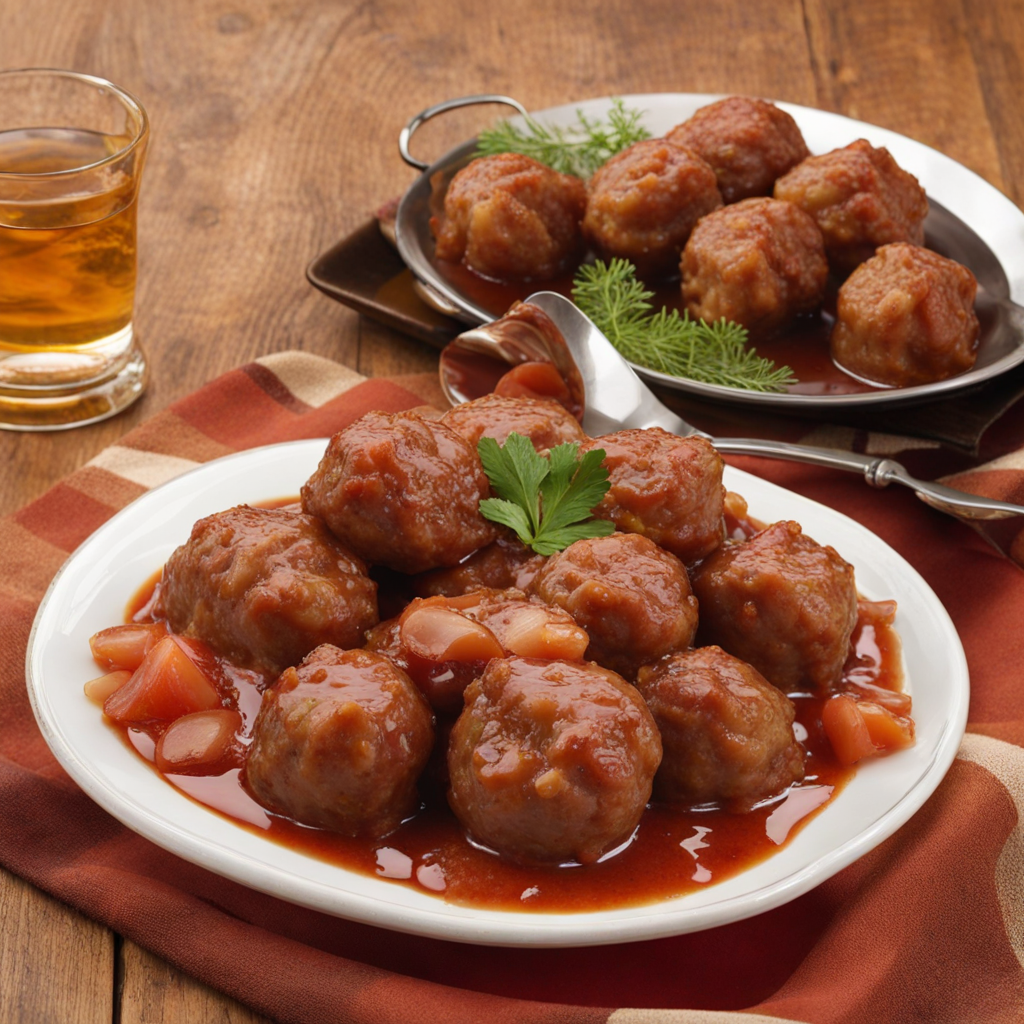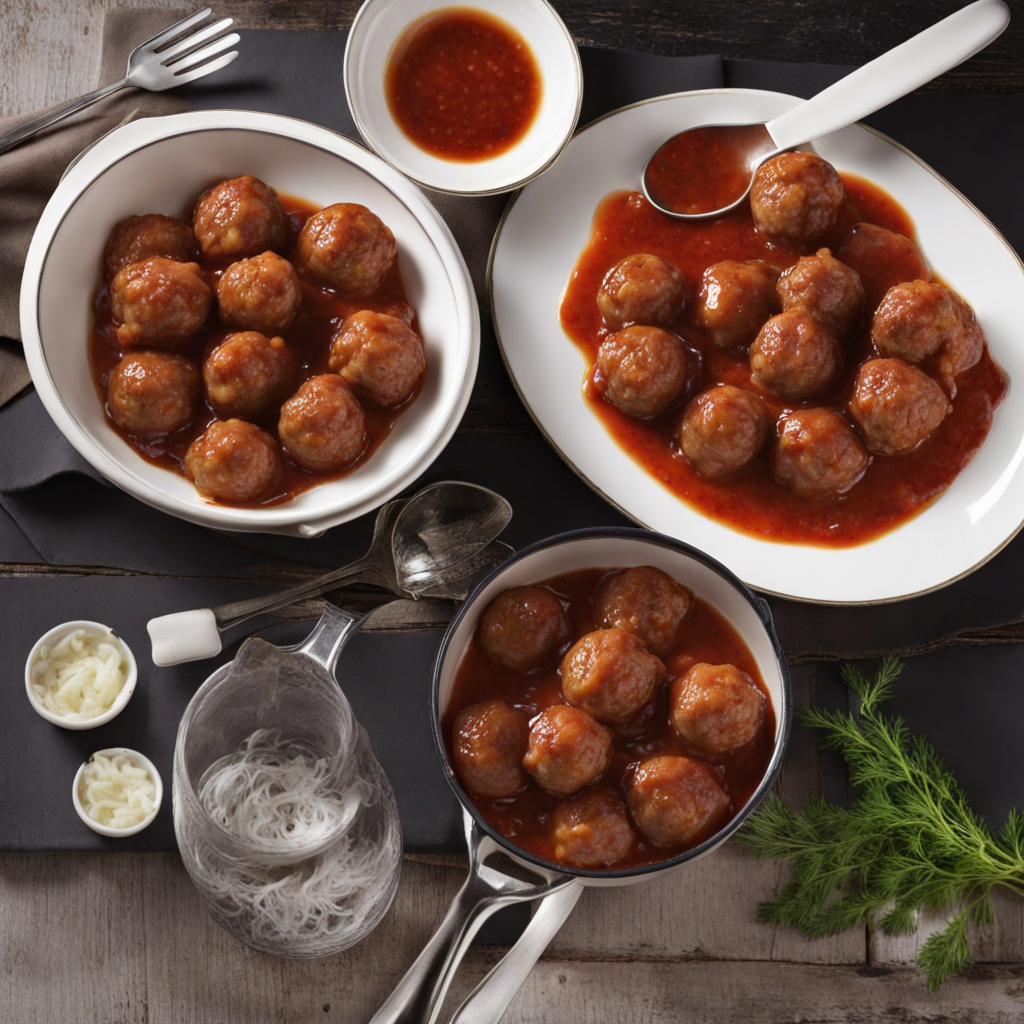Boulets liégeois
Boulets liégeois are a delightful culinary specialty hailing from the heart of Belgium, particularly the city of Liège. These hearty meatballs are traditionally made from a mixture of minced pork and beef, seasoned with a variety of herbs and spices to enhance their flavor. What sets them apart is their unique preparation: they are often simmered in a rich, sweet sauce made from a base of onions, brown sugar, and a splash of vinegar, giving them a perfect balance of savory and slightly sweet notes that tantalize the palate. The texture of Boulets liégeois is another highlight; the meatballs are expertly cooked to achieve a juicy, tender inside with a satisfying outer layer. As they simmer in the sauce, they absorb all the flavors, creating a comforting dish that is both rustic and refined. This dish is typically served with a side of frites (Belgian fries) and a generous helping of mayonnaise, making for a quintessential Belgian meal that is both filling and enjoyable. Exploring Boulets liégeois offers a glimpse into the warmth of Belgian cuisine, characterized by hearty ingredients and robust flavors. Often enjoyed in family gatherings or local bistros, these meatballs evoke a sense of tradition and community. With each bite, you experience the rich culinary heritage of Belgium, making Boulets liégeois not just a meal, but a cultural experience that invites you to savor the simple joys of food.
How It Became This Dish
Boulets Liégeois: A Culinary Journey Through Time Nestled in the heart of Belgium, the city of Liège boasts a rich culinary tradition, with its most iconic dish being the beloved Boulets Liégeois. These meatballs, typically made from a mixture of ground beef and pork, are not just a mere meal but a narrative of the region’s history, culture, and identity. To fully appreciate Boulets Liégeois, one must delve into its origins, cultural significance, and evolution over the years. Origins: A Historical Backdrop The genesis of Boulets Liégeois can be traced back to the 19th century, a period marked by industrial growth and urbanization in Liège. As the region transformed from a rural landscape into a bustling industrial hub, traditional farming practices began to evolve, leading to shifts in dietary habits. The meatball, a versatile and hearty dish, emerged as an ideal solution for workers seeking sustenance during long hours in the factories. The term "boulet" itself derives from the French word for "ball," aptly describing the shape of these meatballs. The combination of minced meats, often enhanced with breadcrumbs, eggs, and various spices, reflects the local agricultural practices and the availability of resources. This adaptability speaks to the broader culinary ethos of Belgium, where local ingredients and methods are cherished and celebrated. Cultural Significance: A Dish of the People Boulets Liégeois transcends mere sustenance; it embodies the spirit of Liège and its people. Traditionally served with a rich, sweet-and-sour sauce made from a reduction of onions, vinegar, and sometimes even a splash of beer or red wine, these meatballs are often accompanied by fries or mashed potatoes, making for a hearty and satisfying meal. The dish holds a special place in the hearts of the Liégeois, often prepared for family gatherings and festive occasions. It represents comfort and nostalgia, evoking memories of home-cooked meals shared among loved ones. In this way, Boulets Liégeois functions as a culinary marker of identity, uniting generations and fostering a sense of belonging. Moreover, the dish has become emblematic of Belgian cuisine as a whole. While it is deeply rooted in the local tradition of Liège, it also reflects the broader cultural interplay between French and Flemish influences that characterize Belgian gastronomy. As a result, Boulets Liégeois is not only a testament to local pride but also a symbol of the country’s rich culinary tapestry. Development Over Time: From Home Cooking to Culinary Fame Over the years, Boulets Liégeois has undergone various transformations, adapting to changing tastes and culinary trends while remaining true to its roots. Initially a humble dish cooked in homes, it began to gain prominence in local bistros and brasseries. Chefs started to refine the recipe, experimenting with flavors and presentations, which contributed to its rising status in the culinary scene. In the 20th century, Boulets Liégeois found its way onto restaurant menus across Belgium, with many chefs seeking to elevate the dish while preserving its traditional essence. Variations emerged, with different chefs incorporating unique ingredients such as herbs, spices, or even cheese, reflecting their regional influences and personal culinary philosophies. The dish also gained international recognition, particularly as Belgium embraced its identity as a gastronomic destination. Food festivals, culinary events, and the rise of food tourism have spotlighted Boulets Liégeois, drawing attention from food enthusiasts and critics alike. The dish is often featured in cookbooks and culinary guides that celebrate Belgian cuisine, further solidifying its status as a national treasure. Modern Interpretations and Global Recognition In contemporary times, Boulets Liégeois continues to evolve while maintaining its traditional roots. Modern chefs are increasingly focused on sustainability and local sourcing, leading to an emphasis on high-quality, ethically raised meats and organic ingredients. This conscious approach aligns with the broader trend in the culinary world, where diners are increasingly concerned with the provenance of their food. Additionally, the dish has adapted to accommodate various dietary preferences. Vegetarian and vegan versions of Boulets Liégeois have emerged, utilizing plant-based proteins and ingredients to mimic the traditional flavors and textures. These adaptations allow a new generation to experience the essence of Boulets Liégeois, ensuring that the dish remains relevant in an ever-changing culinary landscape. Furthermore, Boulets Liégeois has captured the attention of international chefs, who have embraced the dish and included it in their repertoires. This global interest speaks to the universal appeal of well-crafted comfort food, transcending geographical boundaries and resonating with diverse audiences. Conclusion: A Culinary Legacy Boulets Liégeois stands as a testament to the resilience and adaptability of Belgian cuisine. Rooted in the local traditions of Liège, this dish has navigated through history, evolving and transforming while retaining its cultural significance. From its humble beginnings as a worker’s meal to its rise as a culinary icon, Boulets Liégeois continues to capture the hearts and palates of locals and visitors alike. As we savor this delectable dish, we are not merely indulging in a meal; we are partaking in a rich narrative woven through generations. Boulets Liégeois is more than just food; it is history, culture, and community, encapsulated in every flavorful bite. Whether enjoyed in a cozy brasserie in Liège or recreated at home, Boulets Liégeois invites us all to embrace the warmth of tradition while celebrating the ever-evolving nature of culinary artistry.
You may like
Discover local flavors from Belgium







